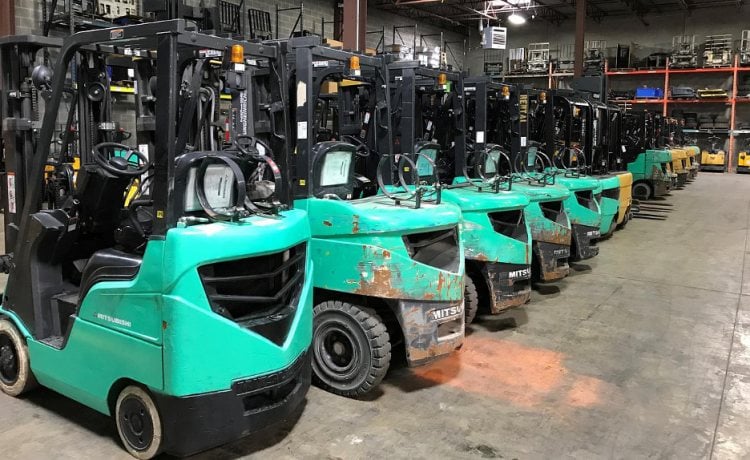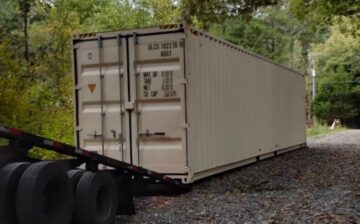There are many different types of forklifts (also known as a side-loader), but the most common are Class III, IV, VI, and VII. Listed below are some characteristics of each type of side-loader. If you are unsure of the difference between one of these types and another type, read on to learn about the benefits of each.
These side-loaders are great for handling heavy loads and other tasks, but please remember that any employee tasked with operating one needs to read through OSHA’s guidelines here: www.osha.gov before working with heavy machinery. They are also very maneuverable, and they can be used in confined spaces.
Types of Forklifts
Class III
A side-loader is a powered industrial vehicle that can be operated on almost any surface. These trucks are designed to operate on smooth, level floors as well as rocky, uneven terrain. Some forklifts can only operate on certain surfaces, like construction sites. These trucks are classified as Class 7 rough terrain side-loaders.
In contrast, trucks used in other industries are more likely to operate on ungraded terrain. To understand which side-loader is best for your operation, consider the different types of side-loaders. A Class II forklift uses solid tires and is ideal for warehouse environments.
They are often designed with attachments to help them do specific tasks, such as stacking pallets. Class II side-loaders include order pickers, reach trucks, side loaders, and stand up riders. They are also highly efficient. They come in different sizes and models, and will fit your needs and the space you have available. They can be rented or purchased to perform a variety of different jobs.
Class IV
If you need a side-loader for a business that requires the highest lifting capacity, a Class IV side-loader is your best bet. If you’re looking for Used Forklifts For Sale, this class is built tough, Class IV forks are ideal for carrying large loads. A Class IV tapered fork is a great option for a number of industries, including retail properties, agriculture, and warehousing.
A Class IV forklift is suited for indoor operations, and has pneumatic tires for traction on uneven terrain. Pneumatic tires are also available on Class V and Class VI side-loaders, and they are often powered by diesel engines or LP gas. The lift’s high lifting capacity makes it an excellent option for assembly line setups. Pneumatic tires are also available on Class V and VI side-loaders.
Class VI
The Class VI side-loader is one of the most versatile types of side-loader available. It can operate with either a combustion engine or alternative energy sources. Battery-powered side-loaders are the preferred choice for many side-loader Melbourne operators. While battery-powered side-loader trucks have many benefits, they are limited to indoor uses.
Internal combustion engines provide better performance outdoors. While electric forklift trucks can handle many jobs, internal combustion engines are more efficient in a range of transport applications. This class of side-loaders is best used in areas where space is limited.
Because they can work in narrow aisles, this type of side-loader can reduce the space needed for the lift. Its telescopic boom makes it possible to reach a variety of distances and lift heights in front of the machine. This feature allows the operator to pick and place loads easily. While telescopic side-loaders are ideal for narrow aisles, they also have a lower center of gravity than pneumatic tires.
Class VII
You may want to use motor hand trucks to move pallets short distances or an electric motor rider truck to place pallets in racking. In other cases, you may need a Class VII side-loader for rough terrain operations. If you still want more information about classes and types of side-loader, you can click here to read on. If your company has multiple types of warehouses, you may need different types of side-loaders.
Here are some important things to keep in mind before buying a Class VII side-loader. A Class VII side-loader is very large, heavy-duty, and is used for industrial settings where a high level of power is required. These forklifts usually have pneumatic tires and are powered by gas, diesel, or electricity. The main difference between a Class VII forklift and a Class IV side-loader is that a Class VII side-loader has a lower capacity range.
We hope you found this blog post 4 Types of Used Forklifts Currently For Sale useful. Be sure to check out our post How to Optimize Your Pallet Wrapping Machine for more great tips!
Have Experience in the Moving Industry? Want an Additional Income Stream? Work With All Around Moving!
Join the Work With Us program and we’ll help you profit while you use your expertise in the moving industry. Click here to learn more.






